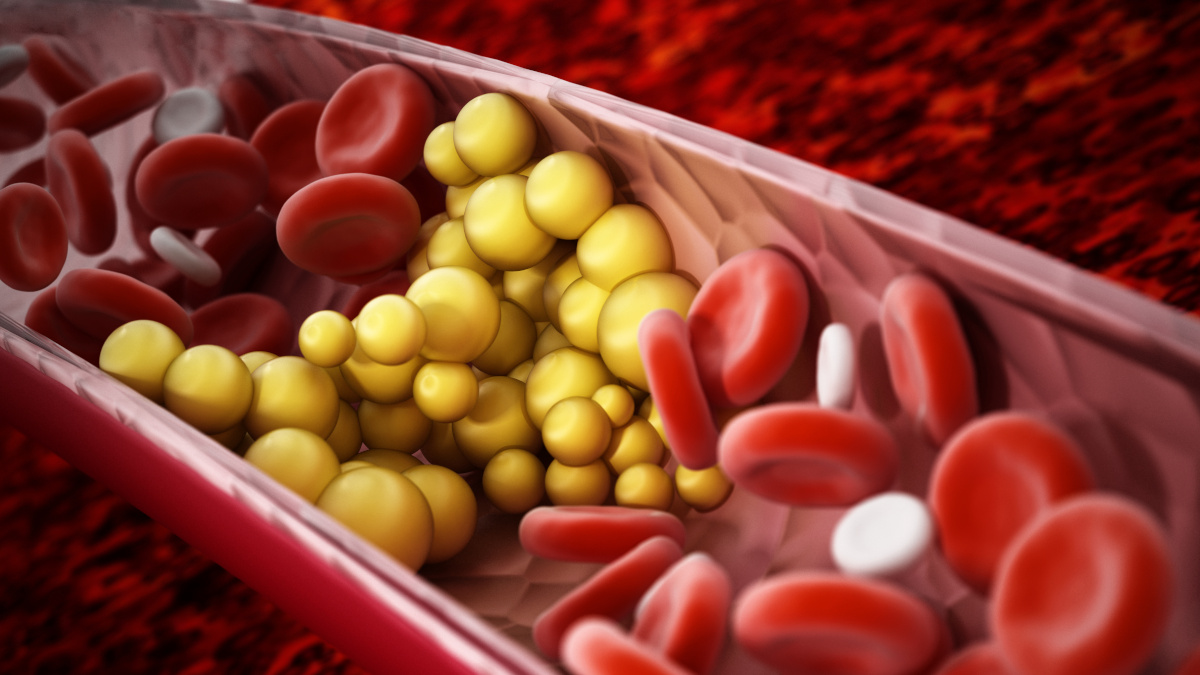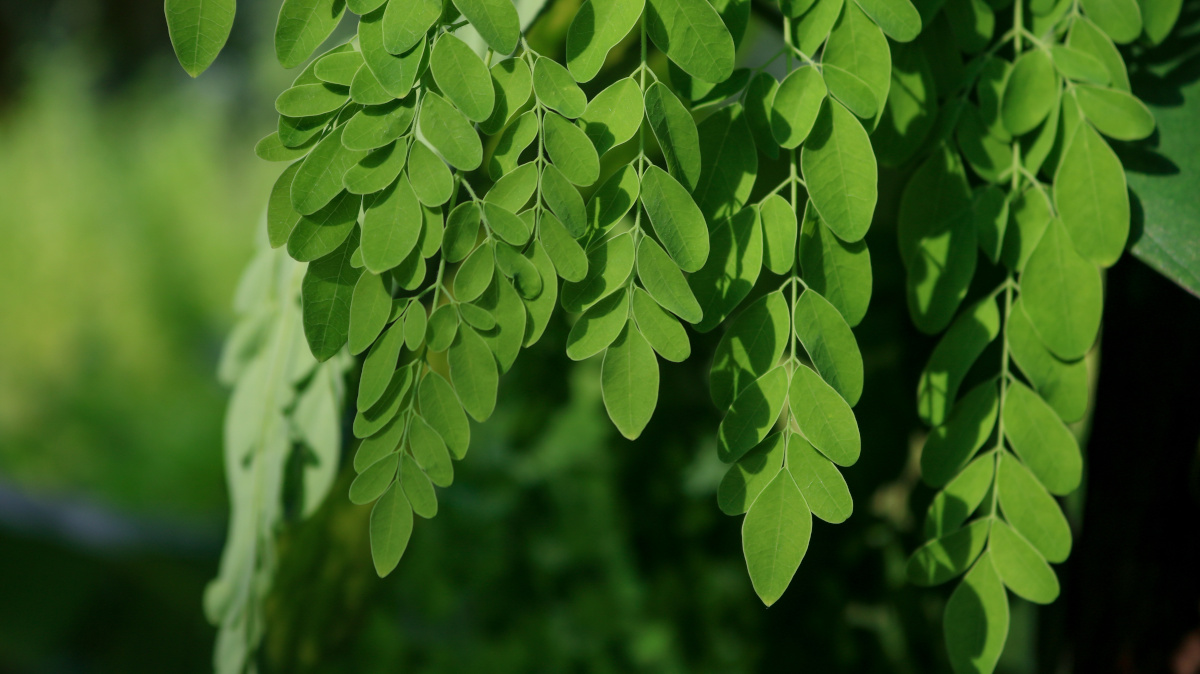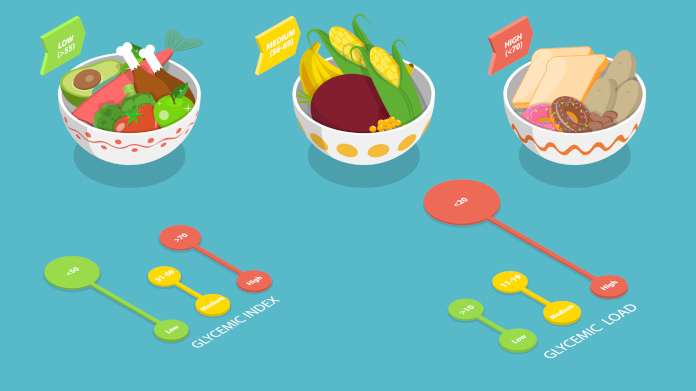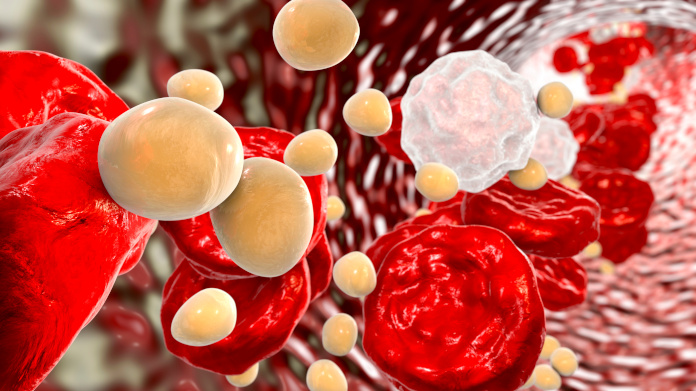
8 natural ways to reduce ‘bad’ cholesterol
What is ‘bad’ cholesterol? How can you reduce it? Discover 8 simple, natural ways of lowering LDL cholesterol in the blood.
A quick reminder: what is ‘bad’ cholesterol?
People often talk about cholesterol... but do you actually know what it is? Cholesterol is a lipid that circulates in the blood and plays an essential role in the human body.
It is in fact a component of cell membranes. It is also the precursor of bile acids and certain hormones. In addition, cholesterol enables vitamin D to be synthesised on the surface of the skin and forms part of our body fat.
Cholesterol is transported in the blood by proteins:
- high-density lipoproteins (HDL) transport excess cholesterol to the liver for removal. This is ‘good’ cholesterol;
- low-density lipoproteins (LDL) on the other hand, take cholesterol from the liver to cells, and can accumulate on artery walls, forming atheromatous plaques harmful to cardiovascular health. This is ‘bad cholesterol’(1).
Let’s explore a few simple measures that can help you lower your level of ‘bad’ LDL cholesterol.
Reduce your overall fat intake
A high-fat diet is definitely to be avoided, especially if you already have high cholesterol levels (2). You can easily reduce the amount of fat in your diet by preparing your meals yourself:
- when cooking on the hob, use a non-stick pan. That way, you won’t need to add any butter or oil
- in baking, you can often halve the amount of butter specified and replace it with pureed fruit. The result will actually be lighter and more delicious.
Take regular exercise to lower your LDL cholesterol
Sport or exercise plays an important role in reducing ‘bad’ cholesterol (3). Try to engage in physical activity on a regular basis. This could take the form of running, playing a team sport or simply walking. Whether alone or with others, walking is the easiest activity to adopt.
Just a short period every day is enough, making sure your activity is suited to your fitness level and ability. If you’re put off by bad weather, you could always invest in an indoor exercise bike and notch up the kilometres while watching TV, for example. It’s definitely preferable to being a couch potato!
Benefit from the properties of linoleic acid
Linoleic acid is a fatty acid which helps to maintain normal cholesterol levels(4). It’s found in certain vegetable oils, some of which are good for cooking, while others are best consumed cold, in a salad dressing, for example.
It can be difficult, however, to increase your intake of linoleic acid while reducing your consumption of dietary fats. To help, you can take a supplement containing conjugated linoleic acid (such as the product CLA).
Cholesterol and heart health: eat fruit and vegetables
You don’t need us to tell you: fruits vegetables can and should be eaten in abundance. A diet high in fruit and vegetables significantly reduces lipid risk factors for cardiovascular problems (5).
If you’re feeling peckish, instead of reaching for a biscuit or piece of chocolate, choose some seasonal fruit. It will almost certainly be high in fibre and vitamins, and most importantly, low in unhealthy fats.
Pectin for combatting ‘bad’ cholesterol
Pectin is a natural substance found in apples and citrus fruit, and is often used to set jams and marmalades. But did you know that it has also been shown to help fight bad cholesterol?
This compound actually helps to maintain normal blood cholesterol levels(6). You can boost your pectin intake by taking a natural concentrate of hydrolysed pectin (such as the product PectaSol®).
Add red yeast rice to your diet
Obtained by fermenting red rice, this yeast contains a beneficial substance called monacolin K which helps maintain normal cholesterol levels (7).
To benefit from its properties, you could take a red yeast rice supplement standardised in monacolin K (such as Red Yeast Rice Extract). But be sure to check with your doctor first as it is contraindicated for those suffering from liver problems.
Quit smoking and you’ll increase your ‘good’ cholesterol
Smoking is an important factor to consider. One American study involving 1500 smokers suggests that cutting down on smoking, or stopping altogether, leads to an increase in levels of ‘good’ HDL-cholesterol (8).
If you find it too difficult, there are various aids that can help:
- nicotine substitutes;
- E-cigarettes;
- alternative therapies such as acupuncture or hypnosis
You can also seek help from specialists, so don’t hesitate to speak to your doctor.
Increase your intake of alpha-linolenic acid
Alpha-linolenic acid (ALA) is an omega-3 fatty acid which helps to maintain normal cholesterol levels (9). It’s therefore important to make sure you consume enough.
ALA is found naturally in various foods, but a particularly good source is sea buckthorn oil. Sea buckthorn is a thorny shrub native to Europe and Asia, with red-orange berries. A good way of ingesting sea buckthorn oil is to take a supplement with a high content of active ingredients(such as Sea Buckthorn Extract).
References
- Huff T, Boyd B, Jialal I. Physiology, Cholesterol. [Updated 2021 Mar 2]. In: StatPearls [Internet]. Treasure Island (FL): StatPearls Publishing; 2021 Jan-. Available from: https://www.ncbi.nlm.nih.gov/books/NBK470561/
- Institute of Medicine (US) Committee on Diet and Health; Woteki CE, Thomas PR, editors. Eat for Life: The Food and Nutrition Board's Guide to Reducing Your Risk of Chronic Disease. Washington (DC): National Academies Press (US); 1992. Chapter 6, Fats, Cholesterol, And Chronic Diseases. Available from: https://www.ncbi.nlm.nih.gov/books/NBK235018/
- Mann S, Beedie C, Jimenez A. Differential effects of aerobic exercise, resistance training and combined exercise modalities on cholesterol and the lipid profile: review, synthesis and recommendations. Sports Med. 2014;44(2):211-221. doi:10.1007/s40279-013-0110-5
- Rassias G, Kestin M, Nestel PJ. Linoleic acid lowers LDL cholesterol without a proportionate displacement of saturated fatty acid. Eur J Clin Nutr. 1991 Jun;45(6):315-20. PMID: 1915205.
- Jenkins DJ, Popovich DG, Kendall CW, Vidgen E, Tariq N, Ransom TP, Wolever TM, Vuksan V, Mehling CC, Boctor DL, Bolognesi C, Huang J, Patten R. Effect of a diet high in vegetables, fruit, and nuts on serum lipids. Metabolism. 1997 May;46(5):530-7. doi: 10.1016/s0026-0495(97)90190-6. PMID: 9160820.
- Brouns F, Theuwissen E, Adam A, Bell M, Berger A, Mensink RP. Cholesterol-lowering properties of different pectin types in mildly hyper-cholesterolemic men and women. Eur J Clin Nutr. 2012 May;66(5):591-9. doi: 10.1038/ejcn.2011.208. Epub 2011 Dec 21. PMID: 22190137.
- Cicero AFG, Fogacci F, Banach M. Red Yeast Rice for Hypercholesterolemia. Methodist Debakey Cardiovasc J. 2019;15(3):192-199. doi:10.14797/mdcj-15-3-192
- Gepner AD, Piper ME, Johnson HM, Fiore MC, Baker TB, Stein JH. Effects of smoking and smoking cessation on lipids and lipoproteins: outcomes from a randomized clinical trial. Am Heart J. 2011;161(1):145-151. doi:10.1016/j.ahj.2010.09.023
- Morise A, Sérougne C, Gripois D, Blouquit MF, Lutton C, Hermier D. Effects of dietary alpha linolenic acid on cholesterol metabolism in male and female hamsters of the LPN strain. J Nutr Biochem. 2004 Jan;15(1):51-61. doi: 10.1016/j.jnutbio.2003.10.002. PMID: 14711461.
Keywords
2 Days
Great service
Great service items dispatched straight away and arrived on time
M***** G***
5 Days
A good webshop for supplements
A good webshop for supplements, it has a large selection of them and considering the quality, the pricing offers good value for money. The ordering process is easy and the products are sent straight away.
Maurice
7 Days
Great quality
Products are of great quality and fast delivered.
Fred Laan
9 Days
SuperSmart destaca por la calidad de…
SuperSmart destaca por la calidad de sus productos.
GONZALEZ PALACIN Luis
9 Days
snelle levering,perfect product.
snelle levering,perfect product.
robert
10 Days
Been a customer for over 15 years and…
Been a customer for over 15 years and find their products along with the service excellent. I recommend Super Smart to all my friends.
Del Chandler
10 Days
Excellent product and service
The product was excellent and so were the delivery and the service
F. Ferlitz
13 Days
Never an issue ordering
Never an issue ordering. Simple and to the point. And product always comes the following day. Quality is great too!
Andrea
13 Days
Excellente service & products with rare…
Excellente service & products with rare revelation supplements I love ❤️
Giovanna Escalera
14 Days
Fast shipping
Fast shipping, products as ordered!
Coindozer
14 Days
The item arrived on time and is what…
The item arrived on time and is what was stated in the order.
HARDY Chris
17 Days
Very good products
Very good products. Very reliable. Quick delivery.
MIFSUD Joseph
21 Days
Fast shipping
Fast shipping, good products (just shipping costs to my country are extremely high).
Tanja Matko
22 Days
Many thanks.
Many thanks.
Alan
22 Days
Quick delivery and good product
Quick delivery and good product
cl



